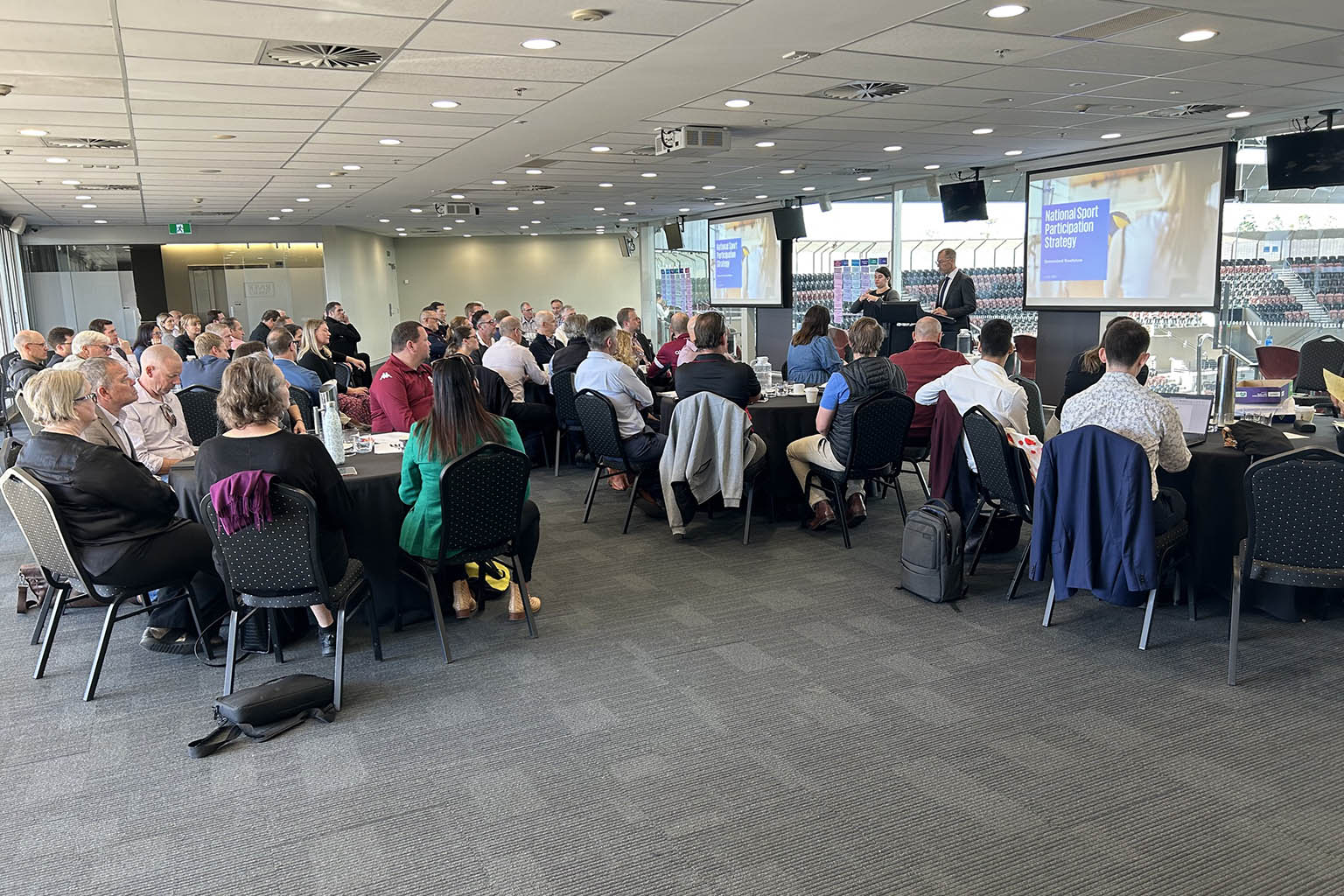06 June 2023
Workshops to help develop the National Sport Participation Strategy have attracted more than 150 participants across three states as the strategy’s Project Steering Group members continue working their way around the country.

The Australian Sports Commission in partnership with sector stakeholders is facilitating the development of the strategy which aims to transform the way participation is connected, delivered and supported in Australia.
A 17-member Project Steering Group (PSG) formed in March to support the strategy’s development.
State and territory workshops soon followed to consult with key stakeholders. The first roadshow in Darwin attracted more than 40 people from local sporting clubs and community organisations, while more than 80 people attended events in Perth and Tasmania.
PSG members Assmaah Helal, Stuart Hodge, Richard McInnes, Pierre Comis and Dr Phil Hamdorf were part of a 65-strong crowd at the Sydney session which also included Paralympics Australia, the Australian Olympic Committee, national sporting organisation (NSO) CEOs, state sporting organisation (SSO) CEOs, disability and multicultural advocacy groups, and school sport.
Paddle Australia CEO Phil Jones said the workshop provided insight into the complexity of the sport participation system and said NSO involvement was critical.
“There were a lot of good ideas coming out of the room and the working group has done a lot of the heavy lifting to put the broader concepts on the table. Sometimes NSOs only see a fairly small part of the broader participation picture, so widening that landscape is really important if we’re to leverage participation opportunities,” he said.
ConnectABILITY Recreation Officer Emily Ayles said it was great to represent the disability sector at the Adelaide workshop to discuss the contributing factors affecting participation in sport.
“Discussing these factors along with solutions among a diverse range of professionals was a refreshing approach to issues affecting us all,” she said.
QSport CEO Tim Klar loved the opportunity to unpack, debate and refine the emerging elements of the strategy with around 65 peers from across Queensland’s sport and recreation sector.
“The compelling case for increasing the volume, quality and frequency of sport participation is clear but there is less clarity about how the expansive network of sport and active recreation providers across the nation should focus and prioritise their energy and resources in unison,” he said.
“The Strategy can act as a unifying force to ensure our collective investment in sport and active recreation participation prioritises the key success factors that will unlock increased and sustained participation in communities across the country.
“I was still reflecting on concepts and conversations from the day much later that night!”
PSG member Maia Tua-Davidson said the Brisbane 2032 Olympic and Paralympic Games were highlighted as an opportunity to leverage and advance all aspects of sport in Australia.
“Queenslanders want a strategy that inspires their communities, understands their sporting landscape, and remains relevant past the printing date of the strategy document.”
“There was a consensus on barriers and constraints and a real energy for moving on from existing systems and models that no longer fit and adapting the offer of sport for changing community needs to bring more participants 'in'.”
Australians are also encouraged to have their say on the strategy’s development via an online survey.
More information on the strategy is available at www.ausport.gov.au/participation2032
- Complete the National Sport Participation Strategy Survey.